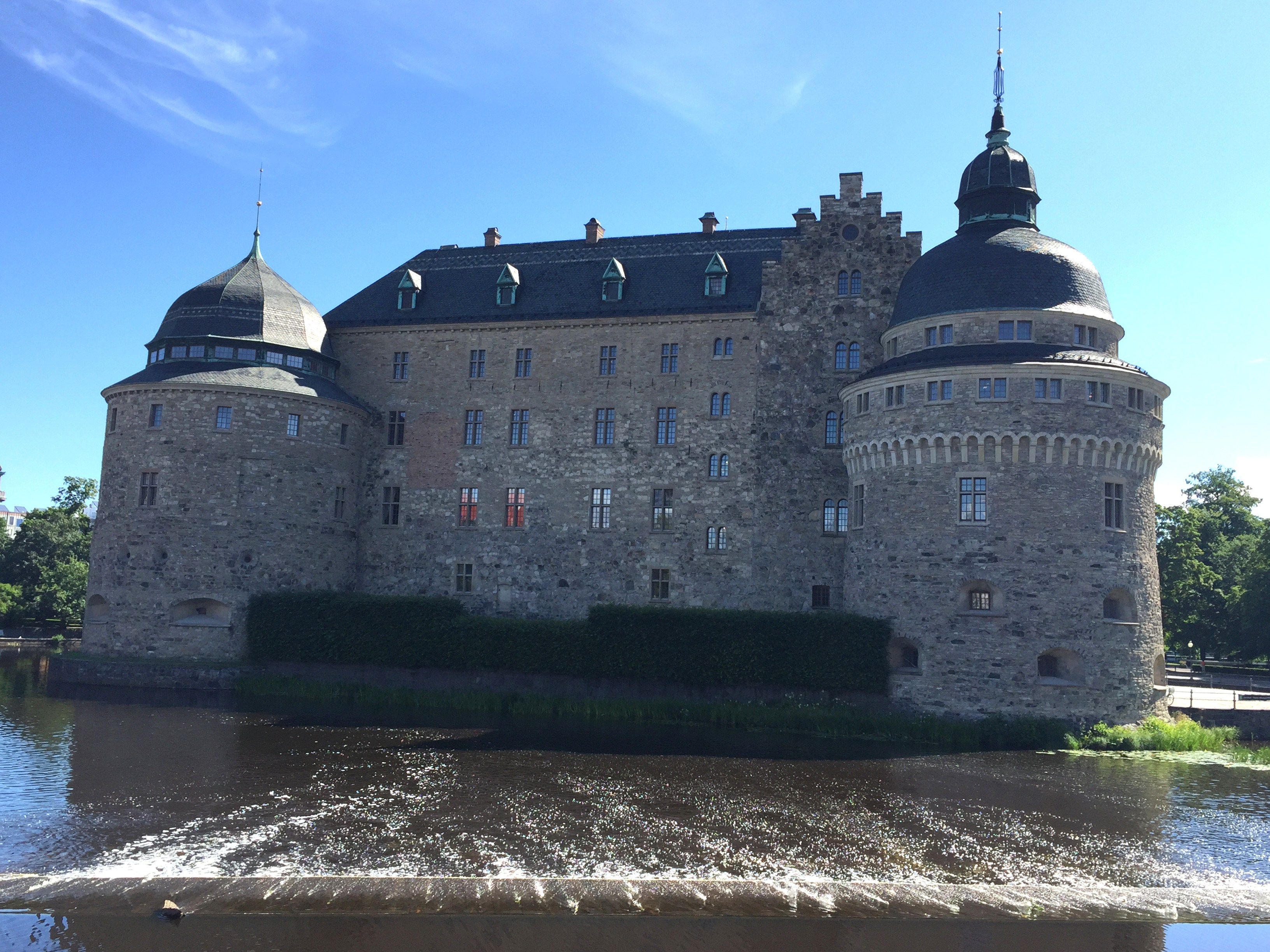It was a great conference in Örebro, Sweden this year. The group had a very good line up of talks covering many different aspects of environmental forensics. The location of the conference was Örebro Castle, providing the conference with a majestic atmosphere.
The conference had many good talks and discussions, and I was able to meet lots of new people as well as get back acquainted with some old colleagues that I have known for years.
The social part of the conferences are always fun as scientists discuss everything from world politics to football (i.e. soccer) to geeky scientific stuff that I am sure other patrons in the bar were wondering about. Thanks again to the local and international organizing committees for putting on the conference.
"POPs Measurement"
The conference began with Dr. Jef Focant giving a talk entitled “POPs measurement: Tracking down the part in the quintillion”. As per usual, Jef gave an excellent technical talk on how scientists (mostly Jef) are working on decreasing the detection limits to reach this very low level of detection.
This level of detection can find 1000s of molecules with uses such as being able to measure contaminants on tiny blood spots (20 uL). We already can detect to the parts per quadrillion with the existing instrumentation, so this 1000x lower DL is not far off. As discussed by Jef, to get there, we may need to rethink QA/QC and what is needed at this limits.
“The Theory of Sampling”
Dr. Kim Esbensen gave a talk that is near to one of my passions, called “The theory of sampling”. Kim discussed how heterogeneity in sampling provides the most error to our measurements of contaminants in environmental samples.
The talk was a brief summary of the workshop that he provided on the day before conference sessions began. This talk covered fundamental concepts, such as total analytical error (TAE) and total sampling error (TSE). He summarized how to conduct representative sampling and provided a reference document and website for further reading and look for DS3077.
Evidence of Fingerprints and DNA
Another great talk was given by Jack Cochran from Restek, one of the best separation scientists in the world. Jack has been a big supporter of INEF along with his company Restek. Jack gave a great talk discussing how the evidence of fingerprints and DNA is accepted in the legal world and how it applies to chemical measurements.
Fingerprints can be mis-identified and there might be too much similarity between two fingerprints to distinguish between them, whereas DNA is distinct. Jack challenged the audience to make sure that when they presented data using petroleum hydrocarbons as his example, that they needed to provide some DNA. The DNA was represented, in this case, as using Nordtest’s diagnostic ratios for petroleum source identification. Using a standardized approach (Nordtest) provides that extra validation that the samples are truly distinct or truly different.
PCDD/F Patterns
Dr. Glenn Johnson presented on polychlorinated dibenzo-p-dioxin and polychlorinated dibenzofuran (PCDD/F) patterns in pentachlorophenol technical mixtures. With Glenn’s historical work, he has collected literature and data and found a consistent PCDD/F pattern in technical pentachlorophenol (PCP) as long as they are produced in a similar method.
One of the main points of Glenn’s talk is that to see the pattern, you need to examine the lower concentration congeners and not be so focused on the higher high concentration congeners such as OCDD. Glenn also proposed that we, as scientists, should be looking at all the PCDD/F congeners in our samples and not just focus on the 2378 substituted ones which was a major thesis point of my talk for this conference as well.
Glenn’s presentation and data will help with understanding PCP related environmental forensics and trials involved technical PCP.
Measurement of PCBs
Nadine Benoit posed a question during her talk on the measurement of polychlorinated biphenyls. Her question, "How Many PCBs are Required for an Environmental Forensics Investigation?”.
In my opinion, the answer is as many as possible. More data will provide insight into the differences between samples. For example, blood PCB measurements from two different polar bears may have similar total PCB concentrations but completely different patterns. These patterns are a result of differences in these polar bears, maybe where they live, what they are eating or maybe the biotransformation capabilities. Without the congener data, this type of information can be missed completely.
Fundamentals of Environmental Sampling, Study Design & More
Dr. Gwen O’Sullivan presented on a class project she had organized for her undergraduates. It was a brilliant talk where she was able to capture the fundamentals of environmental sampling, study design, data quality and data analysis in a field course for undergraduates that encompassed the field of environmental forensics.
The students are lucky to have such a great offering at her university - Mount Royal University. Gwen presented 5 golden rules which was shared by her supervision during her grad studies. One of the rules was to learn the history of your science. Very good point that I used in my presentation at the conference as well. If you do not know the history of the science you are in, you have a limited foundation to work from.
Stable Isotopes Summary
Dr. Paul Philp gave an extended summary talk on stable isotopes, one of the few presentations provided on this topic at the conference. The summary talk covered the fundamentals of isotopes and various case studies that have used isotopes for environmental forensics investigations.
Closing Plenary
I was asked to provide the last talk of the conference on the future of environmental forensics. Environmental forensics is a passion of mine and I was honoured to present my thoughts on the topic.
During my talk, I provided 5 main ideas on environmental forensics and provided an updated definition of what environmental forensics is. These points and definition will be provided in upcoming blogs. Stay tuned.


-1.png?width=859&name=Sample%20%231%20(2)-1.png)
.jpg?width=859&name=Archery%20photo%20(3).jpg)